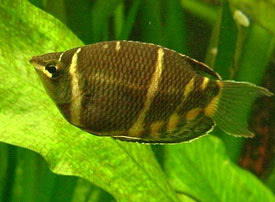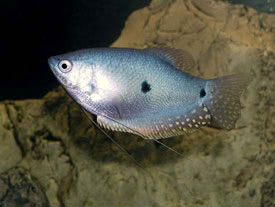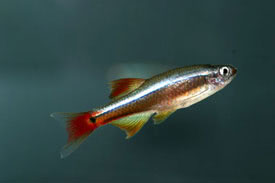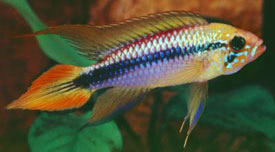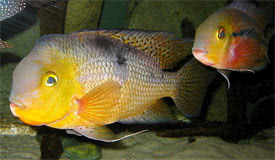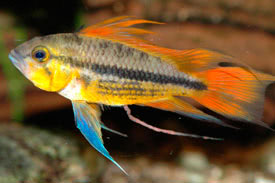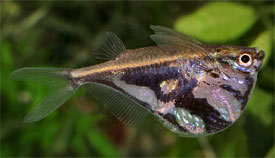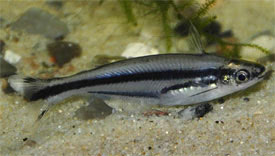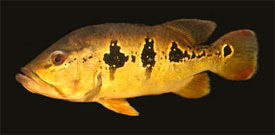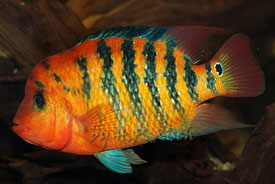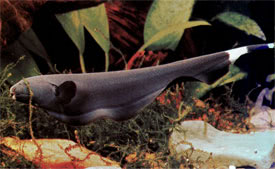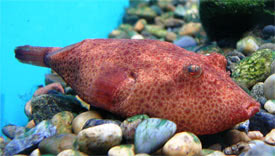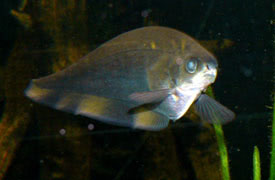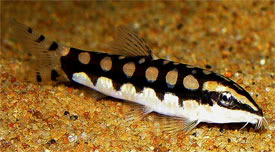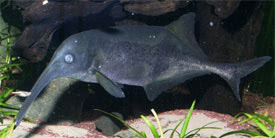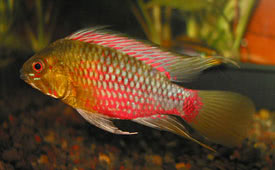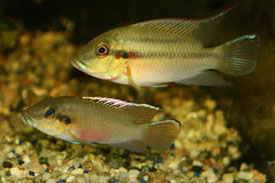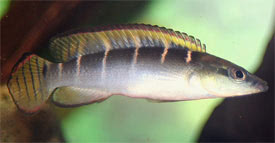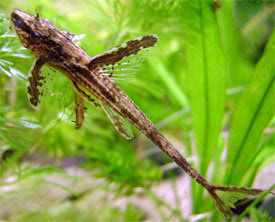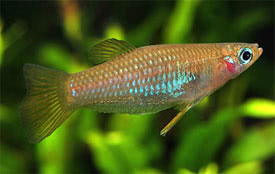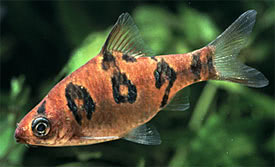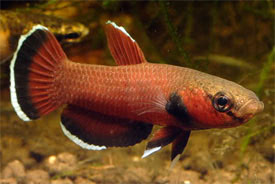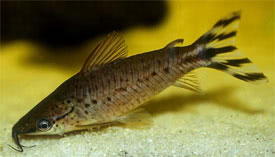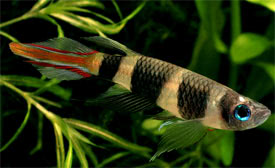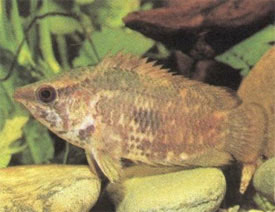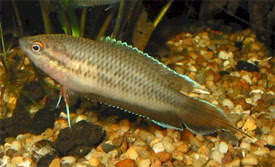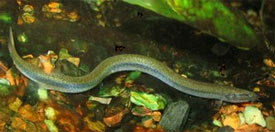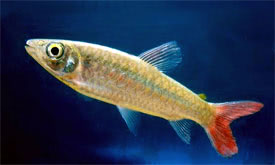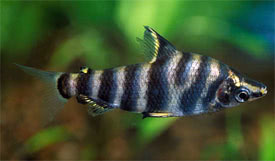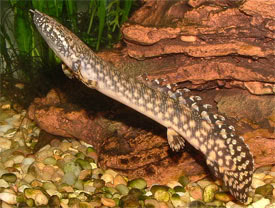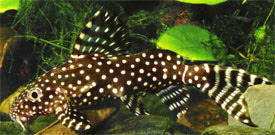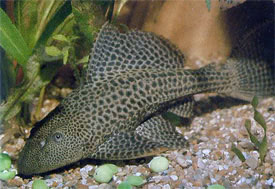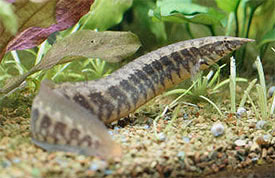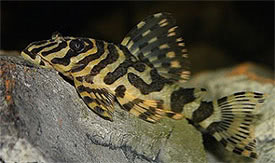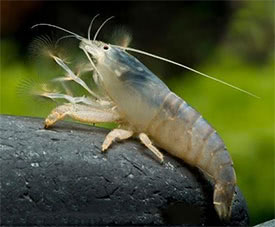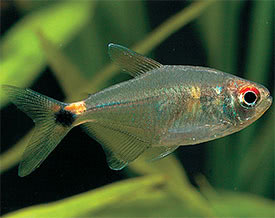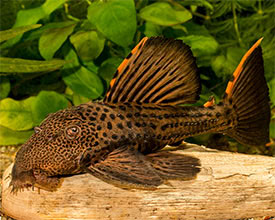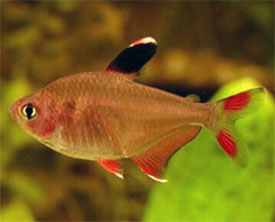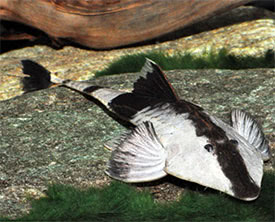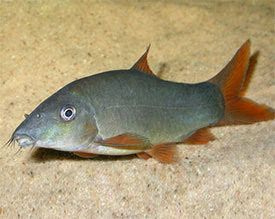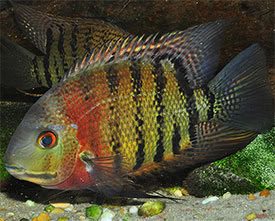
 Magyarul / Hungarian
Magyarul / Hungarian
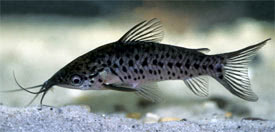

- Scientific name: Dianema longibarbis
- Synonyms: Callichthys adspersus, Decapogon verissimi
- Common name: Porthole Catfish
- Group: Catfishes
- Habitat: South America; Peru and Brazil.
- Size: 10 cm
- Biotope: Inhabits in slower moving creeks, tributaries, floodplain lakes and ponds.
- Social behavior: A very peaceful catfish that should be kept in a small group, and will do well in a community aquarium. It will not harm even the smallest tankmates.
- Diet: Omnivorous; Not a fussy eater, frozen and live foods such as bloodworm, chopped earthworm and tubifex should be its main diet. Flake foods are also accepted. Once settled, it will often feed from the surface.
- Breeding: Hard
- Tank: Minimum 80 litres
- Population: 3-4 fish for 100 litres
- Decoration: Use river sand or fine gravel as substrate. Decorate the tank with driftwood or twisted roots to provide hiding places. A few dried leaves are essential if we want to mimic their natural habitat. Use dim lighting. Heavily-planted tanks are particularly suitable.
- Temperature: 24-28 °C
- pH: 5.5-7.5
- Hardness: 1-20 NK°
- Lifespan: 8-10 years
Description: In body shape the Porthole Catfish looks like an elongated Corydoras. The base color of head and body is grey or brown. The body is covered with black spots, which vary in number and in size. The lower part is light brown or white. Dianema longibarbis has large eyes which are placed on the sides of the head, sometimes even a bit on the lower half. All the fins are light brown. Porthole Catfish has long, flattened snout with two pairs of barbels. The first few pectoral fin rays are thickened in males, while females are more heavily bodied. Breeding is possible, but only a few, conflicting information available about their breeding. Some breeding reports say that this species is a bubblenest builder, others say they lay eggs in a pit which excavated in the substrate or attached to floating cover. For breeding use a small group of fish (4-6 fish), and condition them with large amounts of live foods, and do some large cool water changes. Add a piece of plastic lid to float at the water surface to provide a potential nest-building site. Once eggs are noticed, the adults should be removed, as they may eat them. The fry should be fed with artemia nauplii or other small live foods, after their yolk sacs have been absorbed.
If you're having trouble inducing a spawn, try to lower the water level in the tank, increase the hardness of the water, increase the temperature by a few degrees and starve the fish for a few weeks to simulate the dry season in their natural habitat. In extreme cases the filter can be removed and the water hardness can be increased a little bit. After a few weeks, increase the water level using cooler, soft water and feed the fish with live foods. Put back the filter if you removed it, to provide some water current. The barometric pressure and time of year can also affect breeding activity in many South American species. The wet season occurs between September and April in South America, and this can also affect the breeding of some species.











